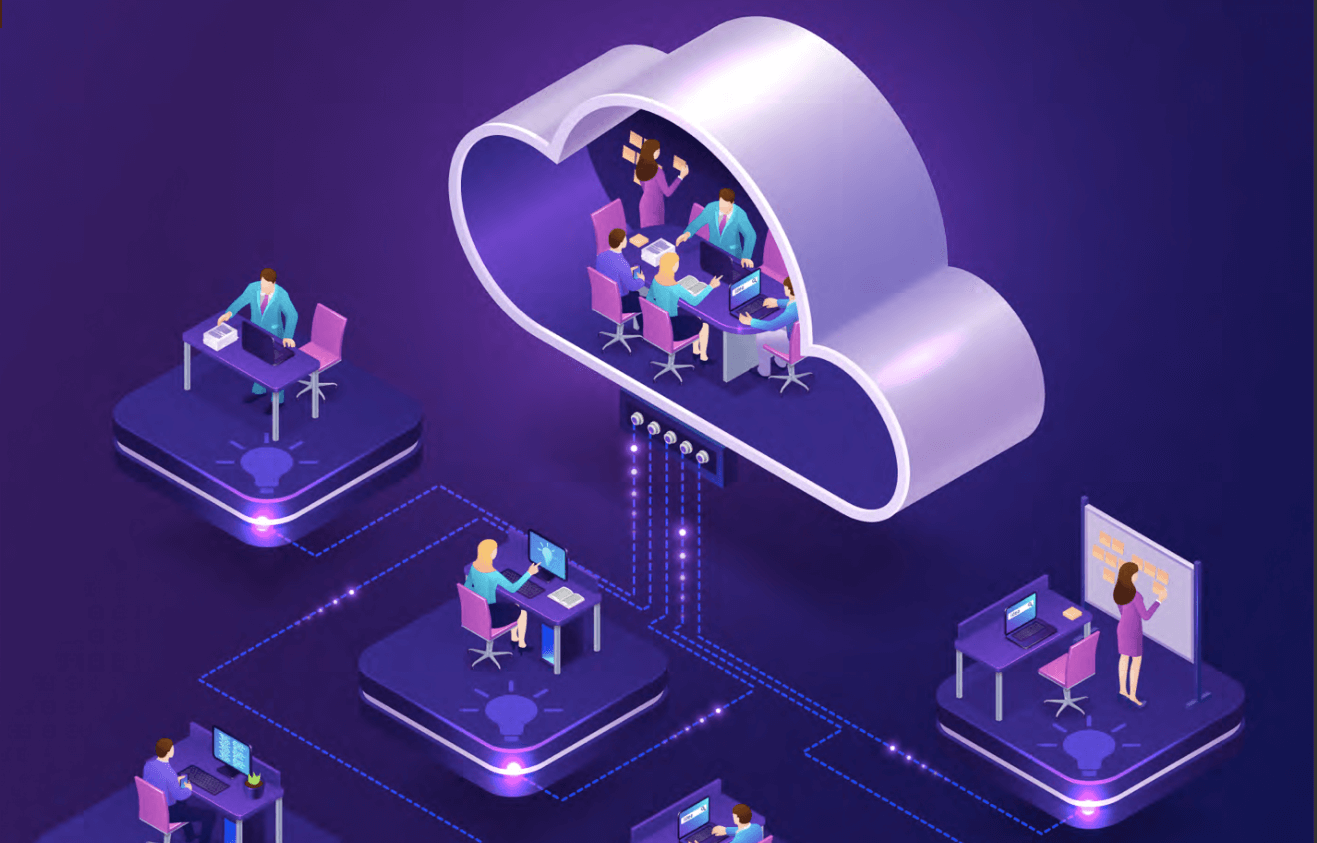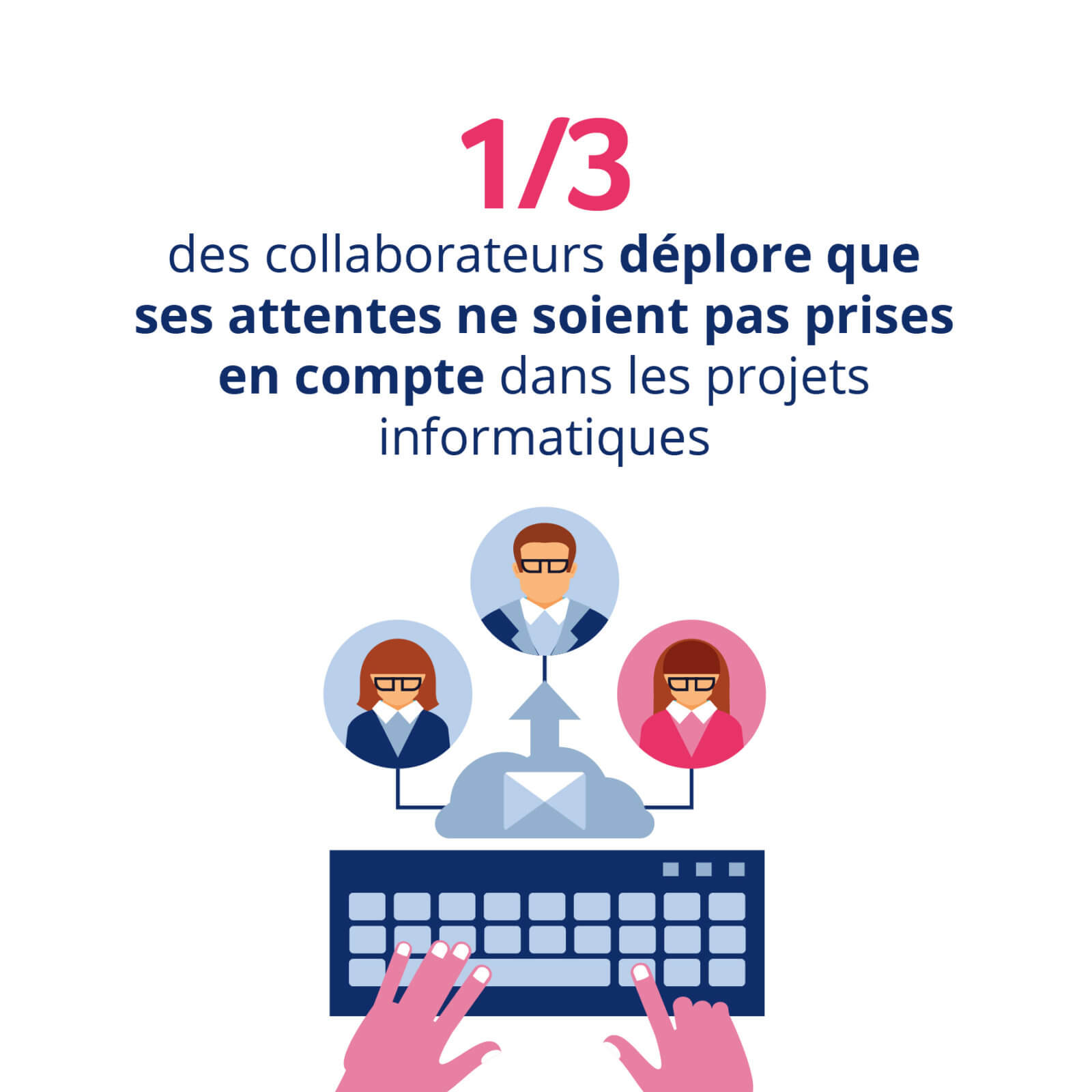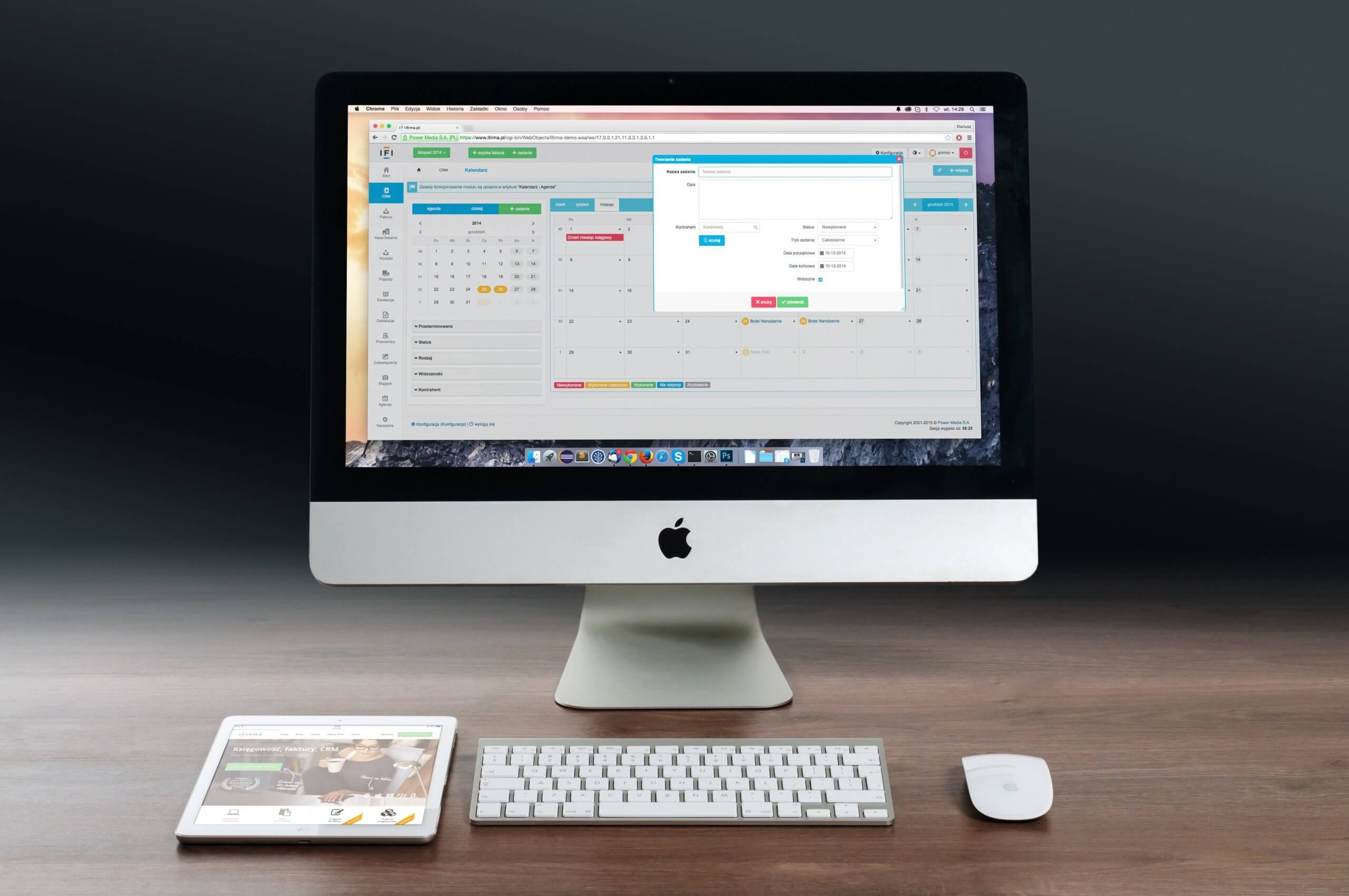With the fast-paced transition to teleworking, the transformation of organizations has accelerated. It is becoming more digitized and structured, while offering greater flexibility to adapt to this new context.
In the Archimag supplement you can download below, discover the key success factors and the right questions to ask yourself to effectively deploy a Digital Workplace.
Read Digiwin’s advice on how to make the transition to digital.
Hybrid (tele)working: highlighting the Digital Workplace
Since spring 2020, a large proportion of organizations have been experimenting with teleworking in a particular context where all employees and customers/providers were also experimenting with it.
After a period of adjustment to this new, hurried context, organizations have adapted and equipped themselves. The aim? Maintain their productivity and continue to exchange ideas in a hybrid, decentralized working environment. While some continue to work in the office, others work from home.
The Digital Workplace has become a key enabler of productivity and remote communication. The diversity of digital tools used has won over employees, managers and top management alike. Management is being reshaped, and collaborative and digital practices are being encouraged.
This momentum has given rise to new expectations and questions about how to meet the challenges of decentralized work. But it has also brought to light a strong need to harmonize practices, tools and the management of digital tools.
What new management, governance and security models should be brought to this new, more digitalized and hybrid organization? What type of Digital Workplace should be integrated? What are the prerequisites for initiating a digital project in the broadest sense?
Rethinking the Digital Workplace and business models
Review your digital environment
In an era when telecommuting is becoming the norm, experimentation and trial and error sometimes reach their limits. So it’s a good idea to take stock of what we like, what we don’t and what we can do better. It’s time for renewal.
This assessment naturally leads to new questions and a new direction for rethinking the organization and its future Digital Workplace.
We recommend that you start by rethinking your digital and organizational ecosystem:
1- Carry out an internal survey
Carrying out this project collaboratively involves the whole company, and highlights subtleties that may be overlooked. The questions will identify :
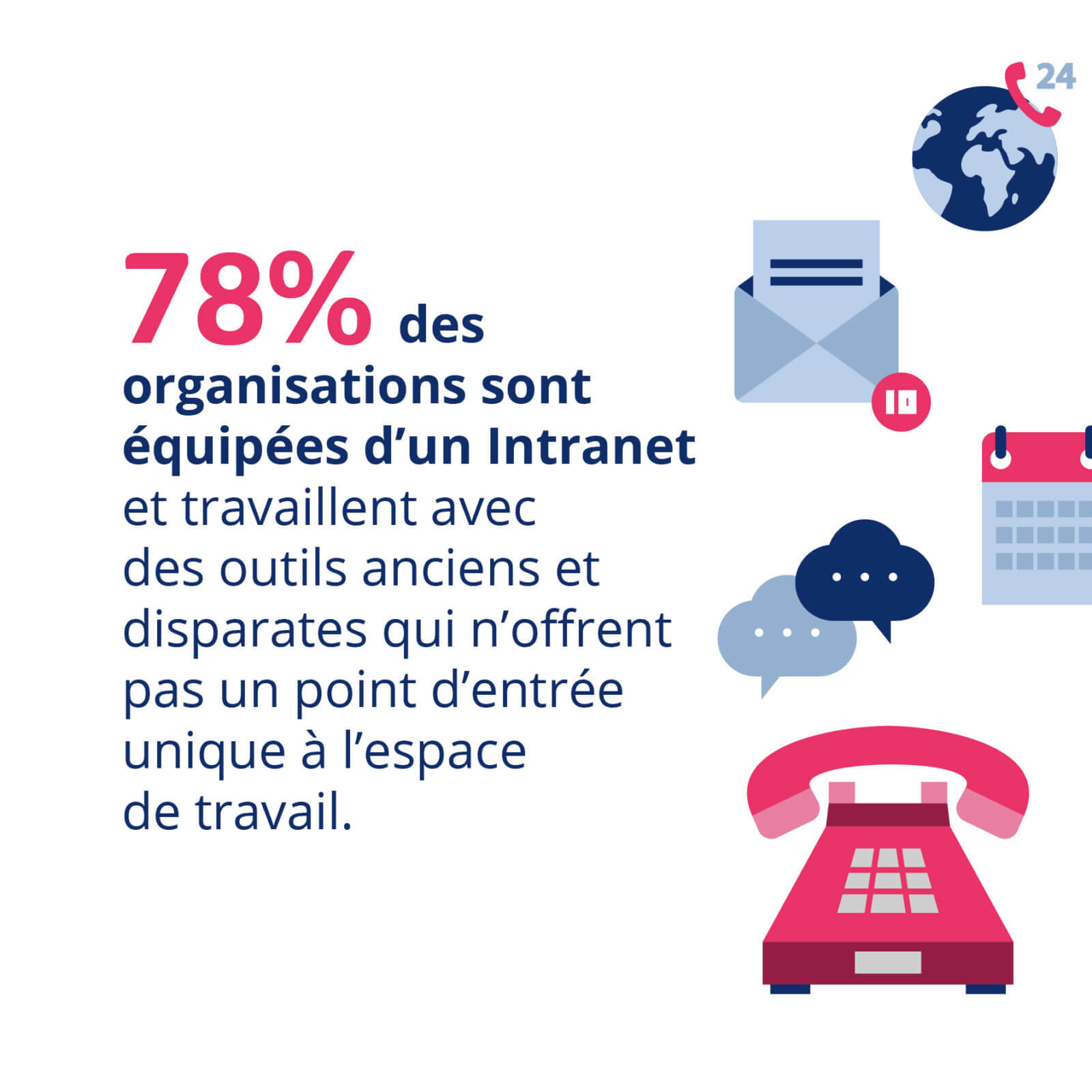
- Tools and practices appreciated and used. These include internal and external tools (such as Shadow IT*) for working (together) and communicating. And then there are the managerial and project management practices that have been put in place,
- Employees’ feelings during this phase of isolation, and any communications actions taken (for inspiration),
- Preferences for alternating work on site / at home…
(*) Shadow IT: “Consumer” tools used in companies without IT approval (such as tools for chatting, project management, document sharing and storage, etc.).
2- List duplicate and external tools
Each tool used reflects a real need. As a result, each team has been able to equip itself in its own way, independently of the others, leading to a multitude of tools. Unifying (and introducing) tools within each team and entity will harmonize practices and reinforce the sense of belonging. Above all, it will avoid shadow IT and its many risks of data leakage. In addition, it will help to shape the design of the intranet.
3- Identify the most dynamic employees
During this period, some employees may have stood out from the crowd. Their initiative may be directed towards: speaking up, innovating in the management of a group project or providing feedback… Ask them to become future project group members, contributors, volunteers or ambassadors!
4- List the types of technical problems encountered
Sometimes network, equipment, video or VPN problems may have arisen during this period. As a result, the pace of our work is impacted and slows down. Let’s take advantage of the opportunity to rebuild the ecosystem on solid, stable foundations, by building an infrastructure designed to meet the future challenges of your Digital Workplace!
Building the Digital Workplace in the image of your organization
As the skeleton of your organization, the Digital Workplace is its reflection in terms of processes, governance and management choices (level of responsibility and empowerment of employees, cross-functional communication). And therefore of your internal dynamics.
That’s why we advise you to consider the project methodology to be adopted upstream, as well as the ease of use of the Digital Workplace and its technical features.
1- Build a change management plan and organize roundtables
According to Archimag’s study, the main barrier to adoption of a collaborative platform is resistance to change. Building a genuine redesign strategy requires above all a collaborative approach to involve your employees in the project.
In operational terms, this means, among other things, holding round-table discussions with a representative panel of your organization, and more in-depth surveys of all users. These workshops should be held throughout the project, and cover a wide range of topics: gathering requirements (tools, usage, organizational), choosing garabits and the digital solution, user testing, etc.
2- Adapting (and adapting) to technical constraints
As mentioned above, technical issues may have slowed or even halted certain activities. The arrival or re-structuring of the Digital Workplace can also bring its share of constraints, if these are not properly addressed. It is therefore important to choose the right infrastructure, to remodel remote access and rights, and also to improve the network to encourage videoconferencing or uploading, for example.
3- Take care of the user experience / UX
In the age of UX (User eXperience), it’s essential to compose your platform with a view to ergonomics, fluidity and coherence with users’ daily lives. The first objective is to match the tools and content that are most useful to employees. The second is to highlight information that is more profiled and therefore more relevant, while providing corporate information in an intuitive way.
Coupled with the alleviation of technical constraints, the digital experience of employees is greatly enhanced and encourages its use and adoption.
Not forgetting that a fluid, user-friendly work environment enhances the company’s brand image and builds loyalty among recruits.
4- Humanize the Digital Workplace
Despite this digital tool, interactions must above all remain human. That’s why it’s a good idea to publish a profile photo so you can get to know your colleague better and avoid anonymity, turn on your webcam during remote meetings (within the limits of bandwidth), encourage collaborative features (such as collaborative spaces, self-help spaces, likes and comments, surveys, FAQs, chat) and put employees in the spotlight (through interviews, announcing new arrivals).
Reinforcing digital practices and security
Digitizing your organization doesn’t just mean “incorporating” a functionally rich tool. It’s also an opportunity to rethink communication and working practices, as well as security.
1- Communicate differently by avoiding e-mail
According to a study by Archimag, 79% of all exchanges take place by e-mail: it’s time to do something about it! The aim is not to make them disappear, but to communicate via alternative channels. To do this, we need to integrate these channels, communicate on them and make the key players in the Digital Workplace exemplary in their use (the project group, contributors, management). The channels are :
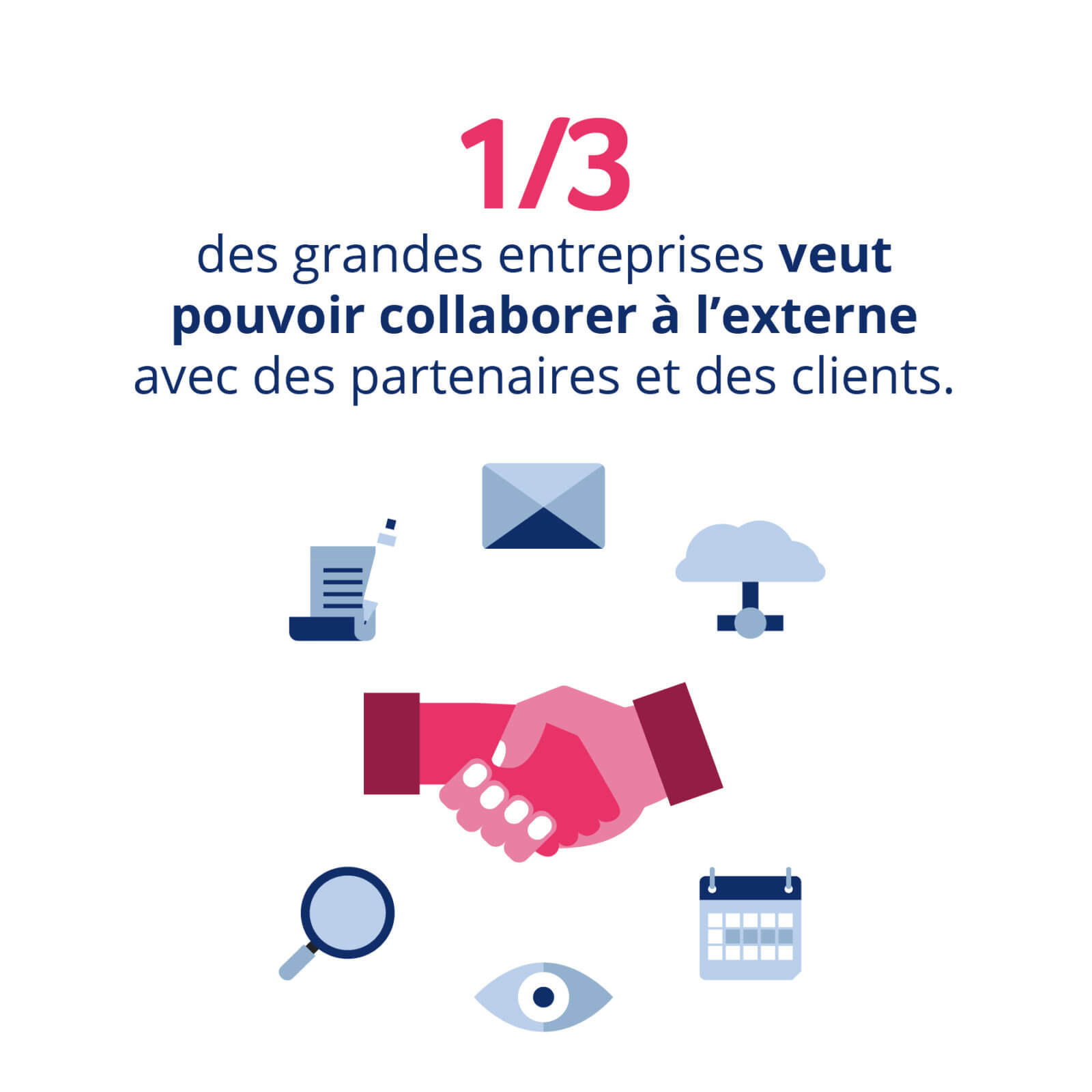
- Editorial page : hot/cold news, institutional presentation of the organization and its entities, HR information and support. These pages can be used to disseminate fixed or news-related information outside newsletter systems. Information is easy to find thanks to its categorization and search engine. These channels can also incorporate surveys and FAQs to provide feedback from employees.
- Collaborative space. Whether linked to a project or to another professional or extra-professional activity, these spaces bring target users together. Its collaborative features will enable everyone to communicate and exchange documentation around a common interest, without sending e-mails and attachments. Co-editing features are ideal for avoiding versioning and promoting live co-construction.
- Instant messaging and videoconferencing. Often seen as the bête noire of management, it’s a fact that everyone has a smartphone. Colleagues are already communicating via external applications. Given the risks of Shadow IT, it is preferable to set up internal, secure and institutional tools. In pairs or in groups, videoconferencing can be used to continue meetings at a distance, with its screen-sharing functions. Widely used over the past year, this tool also needs to review its model. It’s an opportunity to avoid meeting fatigue, to frame the meeting to avoid overflow (due to technical problems, oversights…) etc…
2- Propose new meeting, project and event facilitation formats
The fluidity brought about by digital tools, coupled with increased teleworking, means that social interactions need to be reviewed.
Facilitating remotely or face-to-face requires new skills and new facilitation techniques to keep the audience active. This requires training or awareness-raising on facilitation tips (or an innate adaptation on the part of the employee), not forgetting the quality of the network and microphones…
The same applies to team management. We advise you to communicate on the new functionalities of collaborative spaces, such as dashboards, task management and assignment, but also on digital management practices (congratulating and thanking your team, using “like” to highlight approval…). The major challenge of this configuration today is to be able to manage a decentralized, hybrid team.
Finally, telecommuting does not put an end to internal events. It’s possible to organize videogames, corporate presentations in a different format… Your imagination will be the conductor of your events!
3- Secure your ecosystem
A more digitized organization also makes it more vulnerable to vulnerabilities that can access and disrupt internal information systems. According to Archimag’s study, in 2020, 90% of French organizations, including SMEs and ETIs in the private sector, hospitals and local authorities, were the target of cyberattacks. Among them, 65% have even suffered several malicious acts.
Strengthening your infrastructure, encrypting your data and recruiting specialized profiles in this field is not a luxury to maintain your business and the security of your data.
